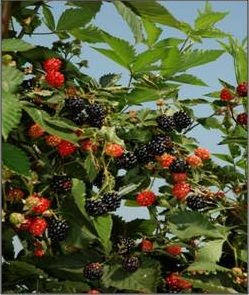I've also been taking a look at my finances, and my student loan, new car, and tax repayments are going to swamp me for about three years. It's unlikely we'll be vacationing for more than a few days away from home, if at all in that time period. To sum that up... I'm going to be staying home and I'm going to be living on limited means for a while. I'm perfectly okay with this, as I'm soon going to be starting a position that is literally a two-minute drive from my house (that alone is a $300/month savings in gasoline as my current commute is nearly an hour and a half each way).
So, I'm getting chickens. I'm converting the shed into a coop and building a run so they'll have a place to scratch and play outside without worrying about dogs, hawks, foxes, raccoons, skunks, and coyotes. It gets cold here, so the chickens I chose are breeds that are exceptionally cold-hardy. I've also chosen breeds that are friendly and lean toward not being broody, since I'm not going to be hatching chicks.
But, back to the shed: This front corner of the floor definitely needs to be addressed. Not only is it an entry for predators, it can expose the chickens to drafts. It looks like the concrete pad crumbled and bricks were used to support the base of the shed. Pavers were thrown down to even out the floor. I think some excavation of the crumbled bits has to happen, and some concrete needs to be mixed up and poured to remedy the situation.
The interior of the shed needs to be cleaned out, but there is plenty of room for 7 chickens, roosting bars, nesting boxes, and a quarantine space for sick or new chickens. Once again, the floor needs to be leveled out and repaired. There is plenty of ventilation in there, which is important for healthy birds.
I love that the doors of the shed open wide and allow for easy entry, which should make gathering eggs and cleaning the coop a breeze, but the locks need to be revamped. Raccoons have finger dexterity and can figure out most simple locks rather quickly. The main latch on the door doesn't latch very well at all.
We're going to build a run similar to this one, but one that is taller because I want to be able to get inside of the run to rake it out and replenish supplies without having to stoop over to do so. The other change I'm making is using 1/2-inch hardware cloth instead of chicken wire, since predators can easily break through chicken wire.
Now, for the fun part: the chickens!
The first chicken breed I chose is the Speckled Sussex. They're just so pretty! They're also prolific egg layers. The speckling is more pronounced as they age, so early on, they'll mostly have brown feathers with a few hints of white.
The second breed I chose is the Buff Orpington. They can occasionally get broody (sit on their eggs in an attempt to hatch them, which won't happen since we won't have a rooster). They're known for being great layers, but also for having a sweet temperament.
We'll have seven hens total: 4 Sussex and 3 Orpingtons. As an added bonus their litter can be added to the compost tumbler, and they'll happily eat veggie scraps, slugs, and other garden pests. We're not letting them free range as we live on a busy road, every one of our neighbors has a dog, birds of prey are everywhere here, and they'll be more than happy to not only clear the bugs out of the garden, but they'll also voraciously eat seedlings.
The day-old chicks will be arriving April 4th or so, and there's a lot to do between now and then. They will be living in a brooder (baby chicken house) for a couple of months before they're introduced into the coop, but we still have a lot to do between now and then. Don't forget that we're also taking delivery of trees for the orchard, assembling the garden beds, and digging 40 million holes for plants and trees.
Here's the list I'm working with:
- build chicken run panels in the garage
- clean out the coop
- excavate loose concrete in the coop
- patch holes and cracks in the concrete floor
- use self-leveling concrete to even out the coop floor
- relocate firewood
- remove roof
- replace latch
- cover windows with hardware cloth
- predator-proof perimeter of coop and run (buried hardware cloth)
- assemble run
- cut out door to run
- build roosting bars
- install cleaning boards under roosting bars
- install nesting boxes
- install feeding/watering/dust bathing stuff










